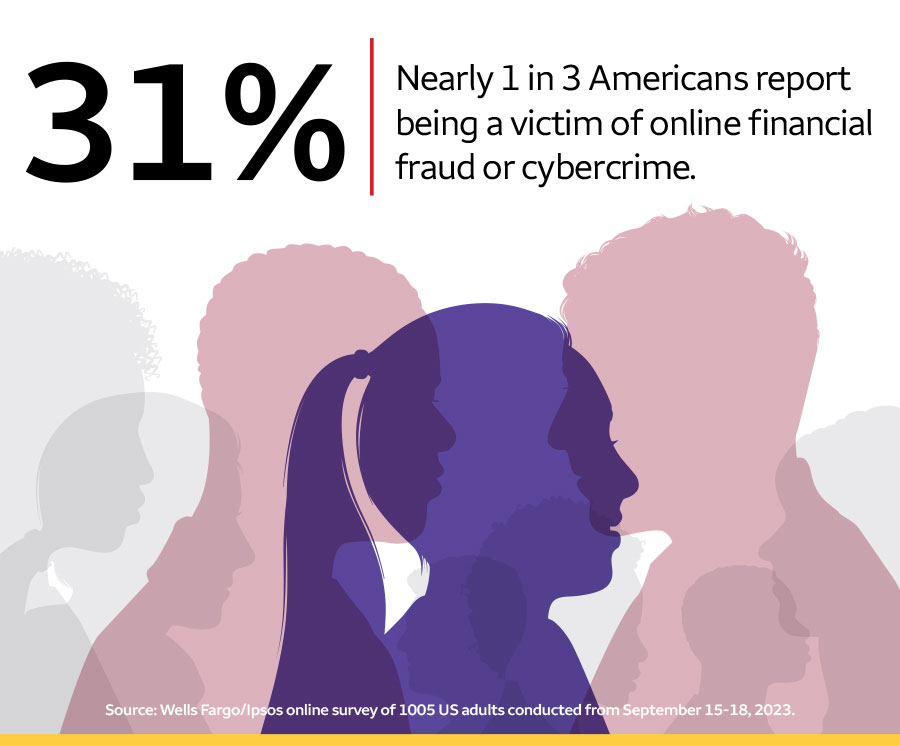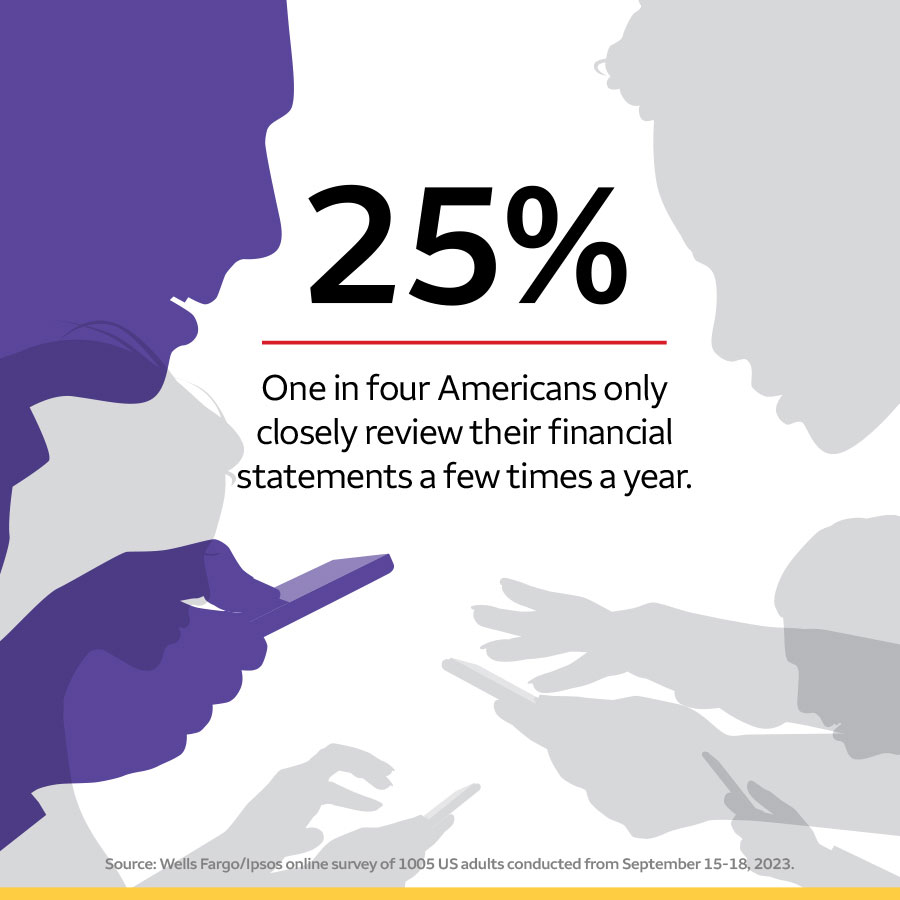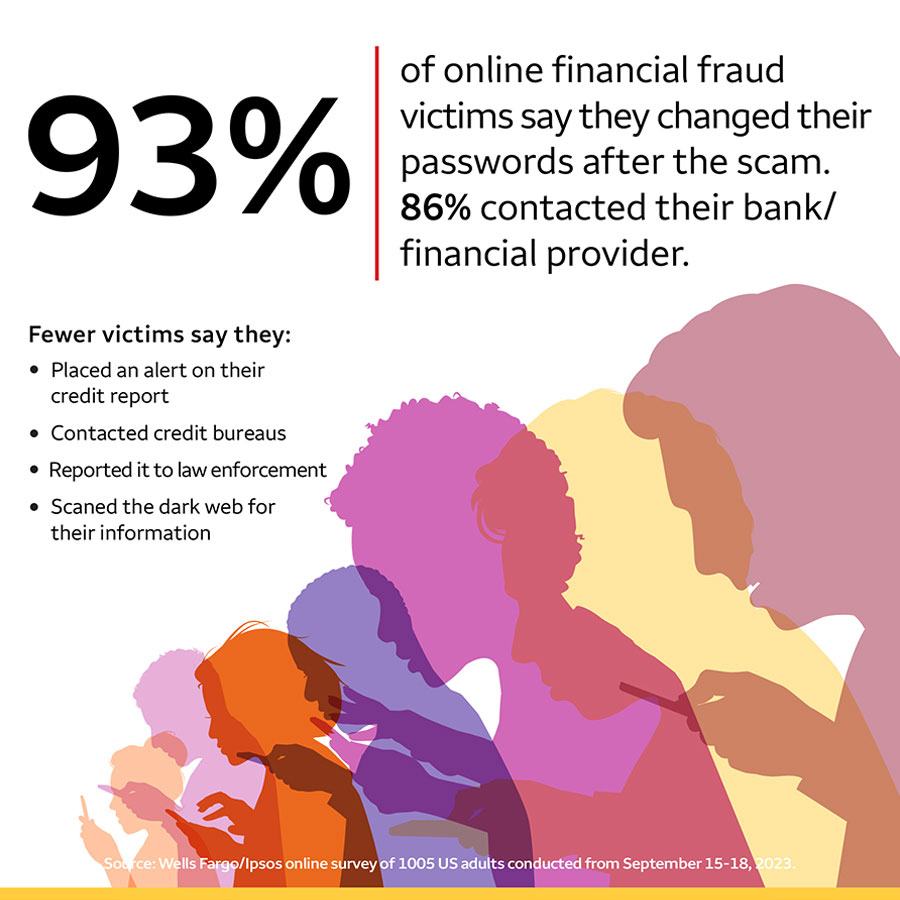3 things to know to protect yourself from cybercrime
Roughly one-third of Americans have become victims of cybercrime. Worried about your own risk of online financial fraud? Here are easy steps you can take to defend yourself.

What is Cybercrime?
Cybercrime generally refers to any illegal activity carried out using computers or the internet that targets or uses a computer, computer network or a networked device. Threat actors use techniques such as phishing, social engineering, malware, and business email compromises to carry out their criminal activity.
Ipsos Survey
Cybercrime risk at a glance
- Credit card fraud is the most common kind of cybercrime
- Nearly half of Americans think they’re likely to become a victim of online banking fraud.
- Most people surveyed (76%) store their sensitive information with an online retailer. Half of all survey respondents (51%) believe this convenience outweighs the risk of exposing their information to data breach.
- Despite being concerned about cybercrime, consumers reported that this concern is outweighed by convenience and that they continue to store sensitive data – including bank data – with online retailers to save time.

Does this sound like you? Here is some information to consider and some suggestions to help protect yourself against cybercrime.

1. Online financial fraud is common, and credit card fraud is the most prevalent
If you haven’t experienced a cybercrime, chances are a friend or loved one has. Nearly one-third (31%) of Americans report being a victim of online financial fraud or cybercrime, according to the Wells Fargo poll.
What’s the culprit? For nearly two in three financial cybercrime victims surveyed, it was credit card fraud. Fewer reported cybercrimes including a data breach (32%), account hacking (31%), online banking fraud or scams (23%), and phishing (14%). However, these may be less visible and, as a result, are less likely to be reported.

2. Online consumers are increasingly vulnerable to cybercrime
As consumers, we are more online than ever before, and our information often accompanies us. How many accounts do you have across the web? About half of people (47%) have at least 10 sensitive online accounts that hold personal information, such as a primary email address or payment-related account information, according to an October 2023 report from the National Cybersecurity Alliance.
For most consumers, at least one of those sensitive accounts includes a retailer. Three in four polled (76%) said they keep personal account information with at least one online retailer. Typically, this speeds up the shopping experience by populating your personal details and payment information.
While it can save us time, storing personal account information may mean your information is at greater risk of exposure. Data breaches compromised more than 422 million accounts across the globe in 2022, according to the Identity Theft Resource Center. Hundreds of breaches involved bank account information.
When fraud does hit your bank accounts, spotting it is key to minimizing the damage. That’s why you should regularly review recent transactions and account statements. But one in four respondents in the Wells Fargo poll said they only closely review their bank accounts a few times a year. By not looking, they may not only be victim of having their money stolen, but also left vulnerable to ongoing fraud or data theft.

3. What can you do to protect you and your family when cybercrime happens?
Many people know how to start. Nearly every fraud victim (93%) polled said they changed their passwords after the cybercrime and 85% said they contacted their bank. According to the survey, fewer victims took further steps like placing a fraud alert on their credit report or contacting credit bureaus or law enforcement.
“When it comes to Wells Fargo customers, we take cybercrime seriously. We want our customers to sleep at night knowing their money and information are safe. That means having a good cybersecurity strategy and heavily investing in things like data protection, fraud monitoring, and threat detection technology,” said Sunil Seshadri, Wells Fargo’s chief information security officer. “We also equip you with tools like 2-Step Verification and fraud alerts so you can stay on top of your own cybersecurity practices.”
In addition to staying informed on the latest online shopping scams or red flags for fraud, here are some simple steps to help keep your money and information safe from cybercrime.

3 practices for stronger cyber protection
1. Use a password manager
Worried you’re going to forget that safer, but incredibly complicated password? Password managers generate and store very strong passwords, so you don’t have to remember them each time you log in. They’re typically encrypted, too, so they provide a good defense against hackers.
2. Enable multifactor authentication
Even if your account information is stolen, multifactor authentication may still protect you. Multifactor authentication may involve email or text confirmation, biometric scans like face tracking, or other methods.
“You wouldn’t trust your home’s security to a single padlock, right?” said Lisa Plaggemier, executive director at the National Cybersecurity Alliance. “Whenever possible, opt-in for an additional layer of protection for your digital accounts.”
3. Update your systems and applications
Developers regularly update software to patch up weaknesses and keep users protected. By running the latest updates to your applications, antivirus software, and devices’ operating systems, you get the most recent defenses designed to stave off threats.
Read more about cybersecurity and fraud prevention








